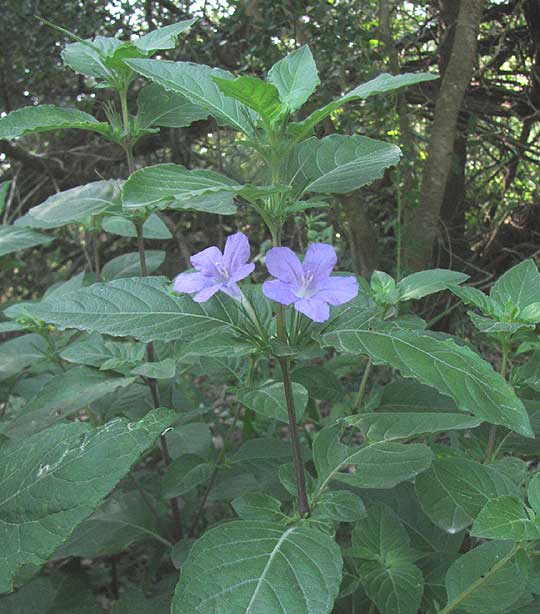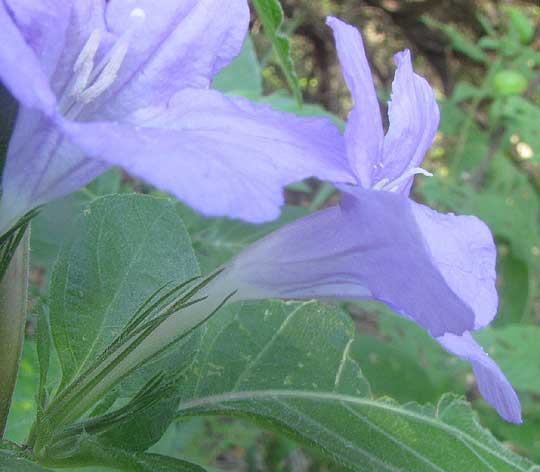Excerpts from Jim Conrad's
Naturalist Newsletter
from the August 4, 2013 Newsletter issued from the Frio Canyon Nature Education Center in the valley of the Dry Frio River in northern Uvalde County, southwestern Texas, on the southern border of the Edwards Plateau; elevation ~1750m (~5750 ft); N29.62°, W99.86°; USA
DRUMMOND'S WILD PETUNIA
In our travels we keep running into "wild petunias," genus Ruellia of the Acanthus Family. We've profiled two in Mexico, one in Mississippi, and a few weeks ago one here in Texas. Now we have yet another species, shown below:

A picture showing the calyx's exceptionally long, slender sepals appears below:

This one is similar to most other Ruellia species: mid-summer blooming; lavender, fair-size, trumpet-shaped blossoms with five flaring corolla lobes; a knee-high plant with simple leaves bearing no teeth. However, there's one obvious difference that quickly separates this Ruellia species from most others, and that is that its flowers arise in few-flowered groupings in leaf axils -- in the angle formed where petioles attach to the stem. Flowers of most other species form at the top of the plant and often there are numerous flowers. This species' leaves also are a little broader than normal, being almost rounded at their bases.
This is the Drummond's Wild Petunia, RUELLIA DRUMMONDIANA, endemic just to a few counties in Texas and maybe a bit of adjacent Mexico. It specializes in rocky soils at woodlands edges, openings, prairies, pastures and savannahs. Ours was at the edge of a woods.
Caterpillars of the Common Buckeye butterfly feed on the plant.
The species is pretty enough to be planted in gardens, where it is noteworthy for producing flowers throughout the summer.
Wild petunias aren't closely related to regular garden petunias, being assigned to entirely different plant families.